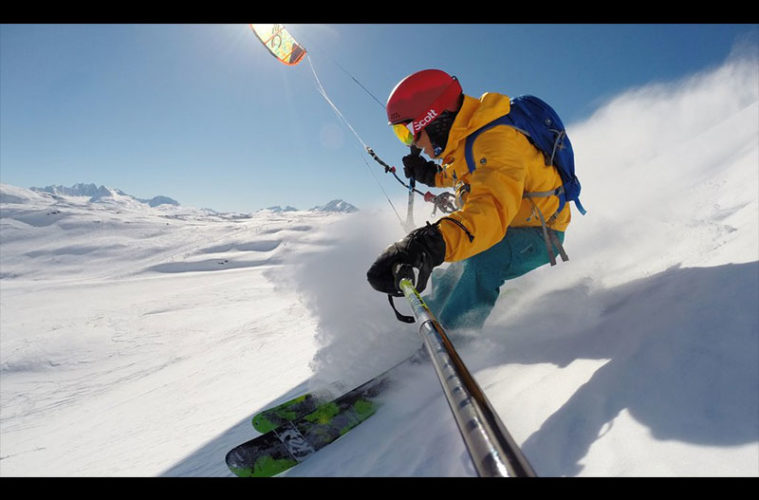Snowkite legend from the Gorge, Ken Lucas, shares the most important things to consider when learning to snowkite based on his experience of 25 years of snowkiting around the globe on 6 continents.
To keep things simple, some of these tips are very basic, yet completely opposite of what is done on water, while at the same time critical for a safe enjoyable experience. Ken does quite a bit of water kiting, enjoying high wind kiting in Hood River and wave kite surfing around the globe. “Sliding on snow is one of life’s most enjoyable activities. 125 million people ski and snowboard to experience the exhilarating feeling of speed in this natural element. Adding the kite expands the feeling 10 times in size along with beautiful views of majestic, snowy mountains”.
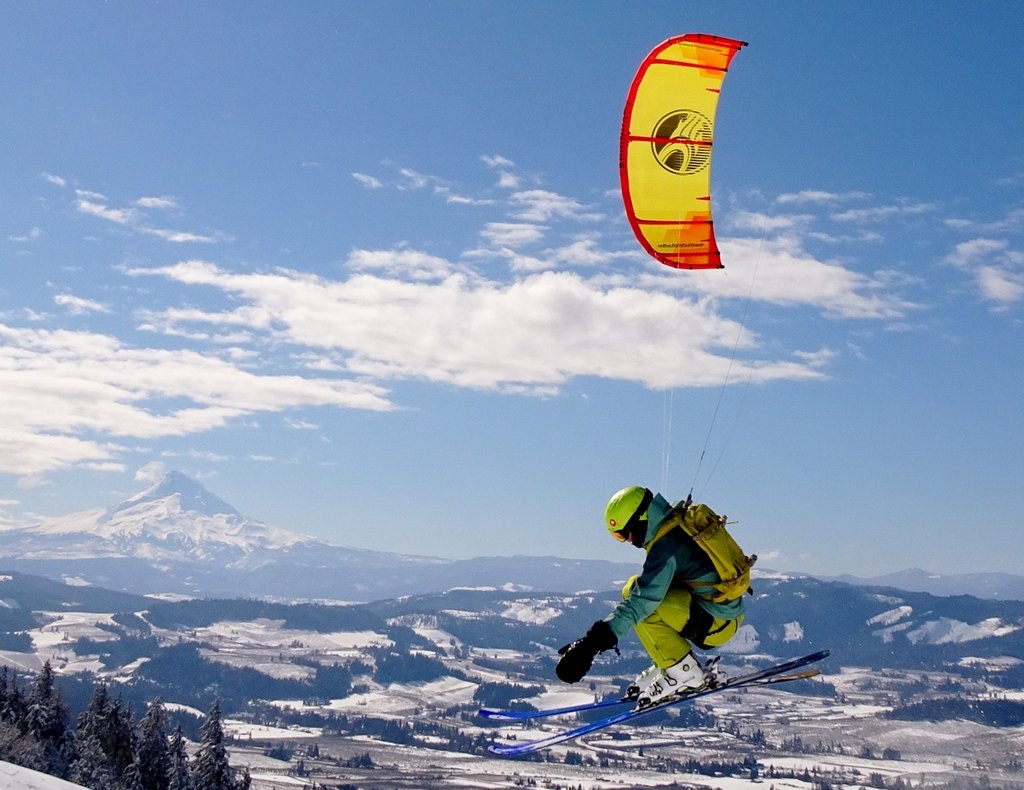
IT ISN’T DANGEROUS
This tip is rated #1 because it is the question I am asked most often by experienced water kiters. Yes, you are kiting on land but it is covered by soft snow. In addition, the inherent slipperiness of snow especially when compared to how water stops you suddenly when crashing really helps make regular falls snowkiting not dangerous. Very similar to an intermediate fall at a ski resort.
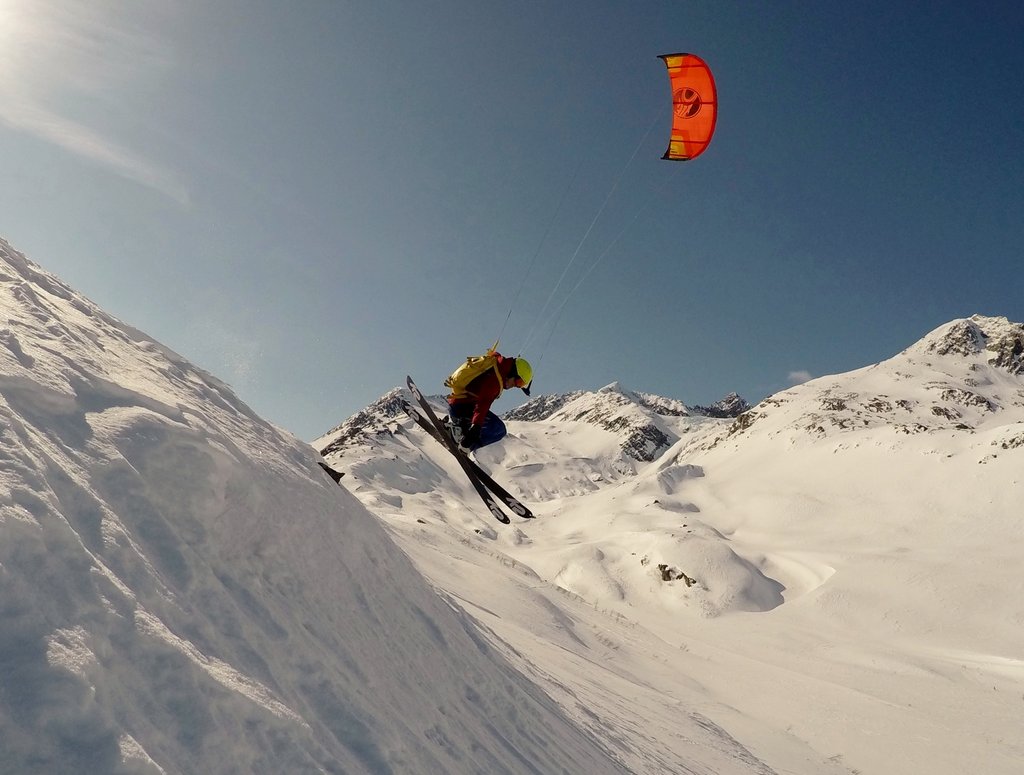
LOCATIONS
Snowkiting is performed in the winter, in the mountains, and usually at the end of a snowy road. Please consider: a good winter vehicle, no cell phone service at location, no ski lodge to warm up, and bring your own water, food, and a warm puffy jacket for après snowkite parking lot activities. The comradery amongst snowkiters is top shelf as cold temperatures bring everyone closer to warm up. In the US, you can find some of the best spots in New England, New York, Minnesota, Wisconsin, New Mexico, Colorado, Utah, Montana, Wyoming, Idaho, Oregon, and California. Lots of people travel to Utah, Montana, and Wyoming for consistent conditions. Some of my favorite places are Lake Tahoe, Mt. Hood, Snoqualmie Pass on Lake Keechelus in Washington State, Mt. Haggin south of Anaconda, and many random spots when the deserts get snow. In Europe, Col du Lautaret in France is a fantastic spot for beginners to experts.
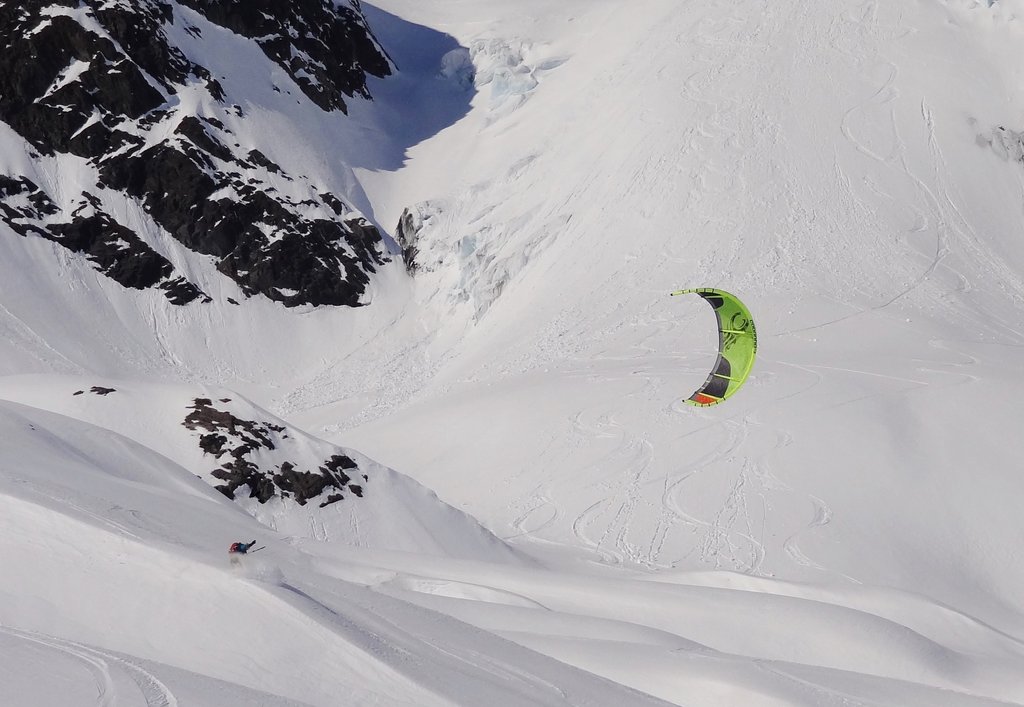
WIND
Snowkiting locations have wind and the wind affects the snow. Optimum conditions are after a night of fresh snowfall, then getting out as soon as there is enough wind for pristine riding in powder. A few days of strong wind will impact the surface. Terrain is great as soft snow is found in gullys when the ridges are crusted. Generally, you’re good to ride in 8-10 knots of wind. There is no buoyancy issue and it is a slippery surface. So, if the kite will fly, then you can ride. The wind is traveling over land so it can be more turbulent than over water. Popular mountain snowkite spots world wide tend to have smoother wind as they are located in expansive open areas, at a mountain pass, or higher elevations with cleaner wind. Staying upwind and going upwind is much easier than on water because skis and boards have a strong steel edge; and there is no drift downwind as in water. In the beginning wind shadows can be tricky. But, you learn quickly how the terrain affects the wind in your kite. It adds a whole new, fun dimension to kiting as we play with the wind as well as the snow. It is possible to ride a slope in any wind direction, but best and safest is wind blowing up hill for many reasons. Keep in mind that there are wind eddies, updrafts, downdrafts, and turbulence at the top of every ridge when there is wind. Best to not get caught in this turbulence as the kite could behave violently. Be ready to pull safety release when approaching ridge tops. In the U.S.A., the National Weather Service forecast for spot location is sufficient. Each snowkite location will have a favored wind speed and direction that you could then compare to the forecast. In other countries, search for a similar weather forecast agency.
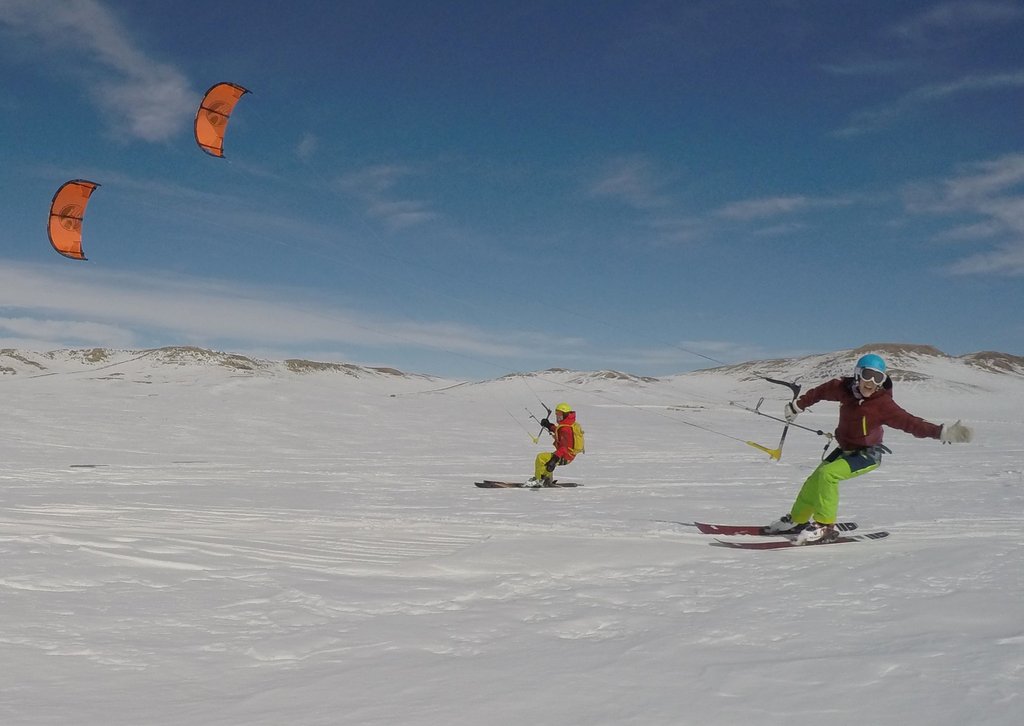
SAFETY
Number 1 is weather. The right day in snowy, winter, mountains is sunny conditions which decreases risks. We generally ride on clear days for many reasons: the speed is fast and visibility of the snow surface is key; and stormy weather can create white-out conditions with risk of getting lost. Kite with a buddy as a night in the mountains is just as cold (almost) and lonely as they were 200 years ago. And, remember to only venture as far from the car as you care to walk back if the wind dies or equipment fails.
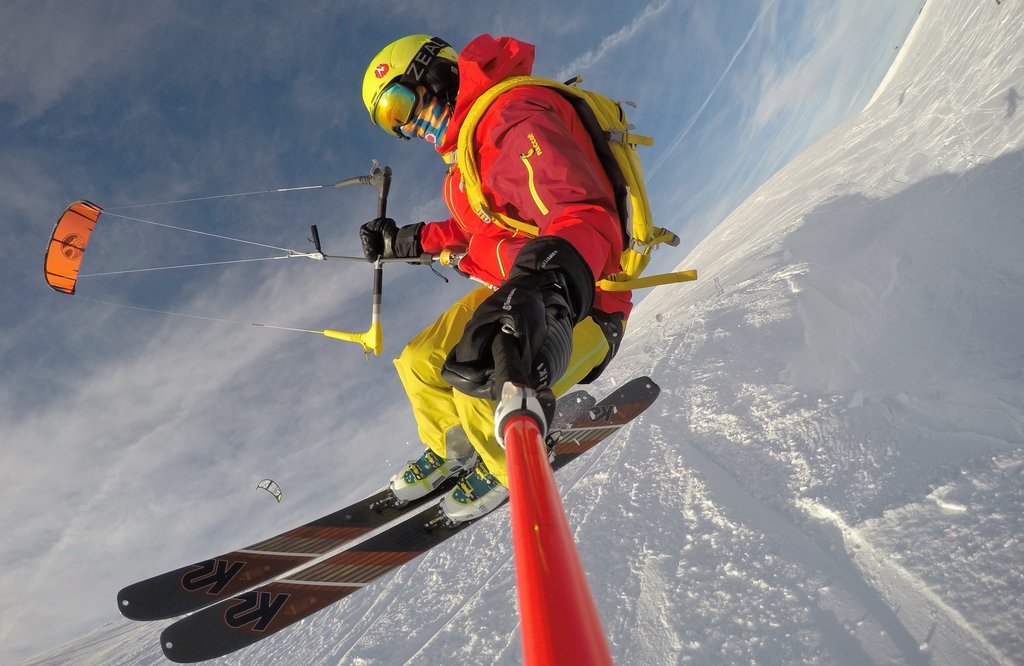
SNOW GEAR
Snowkiting is a warm activity and requires 1 less clothing layer as compared to a similar day at the ski resort when riding lifts. Your water harness should fit over the winter layers by adjusting the straps. Helmets are worn by 99% of snowkiters and neck gaitor or Buff is important as our face is exposed to the wind. Mittens or good gloves that can pump and attach lines really help on cold days.
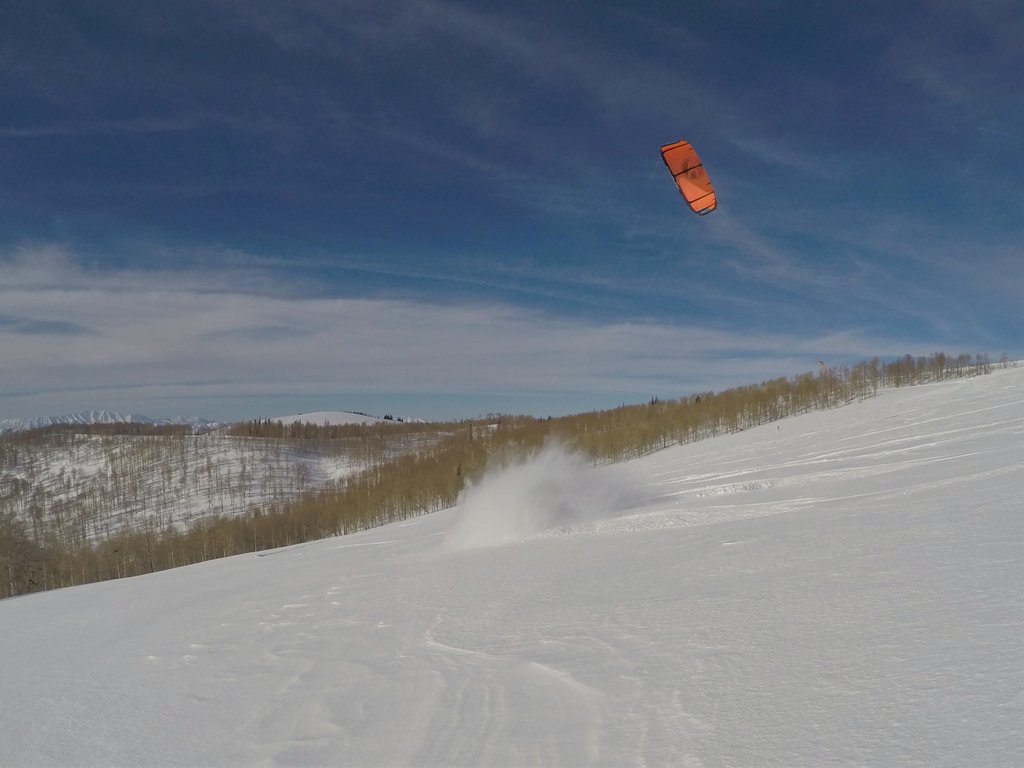
KITE GEAR
Kite gear. For simplicity, familiarity, and performance use the same kite on that you use on water. A light wind kite 12-15m is used 80% of the time as snowkiting is best in light wind (remember it’s a slippery surface so the kite and your speed will be similar to foil kiting). Pumps can act a little funny in really cold weather as the seals will slip slightly but they still function. Once a kite is pumped, placing it down in the snow has differences as compared to the throwing some sand on it at the beach. The main difference is the snow is slippery and the kite will slide away on the snow unattended. Please comment if you have questions about anchoring the kite on various snow conditions like ice, deep powder, wind hammered, etc.
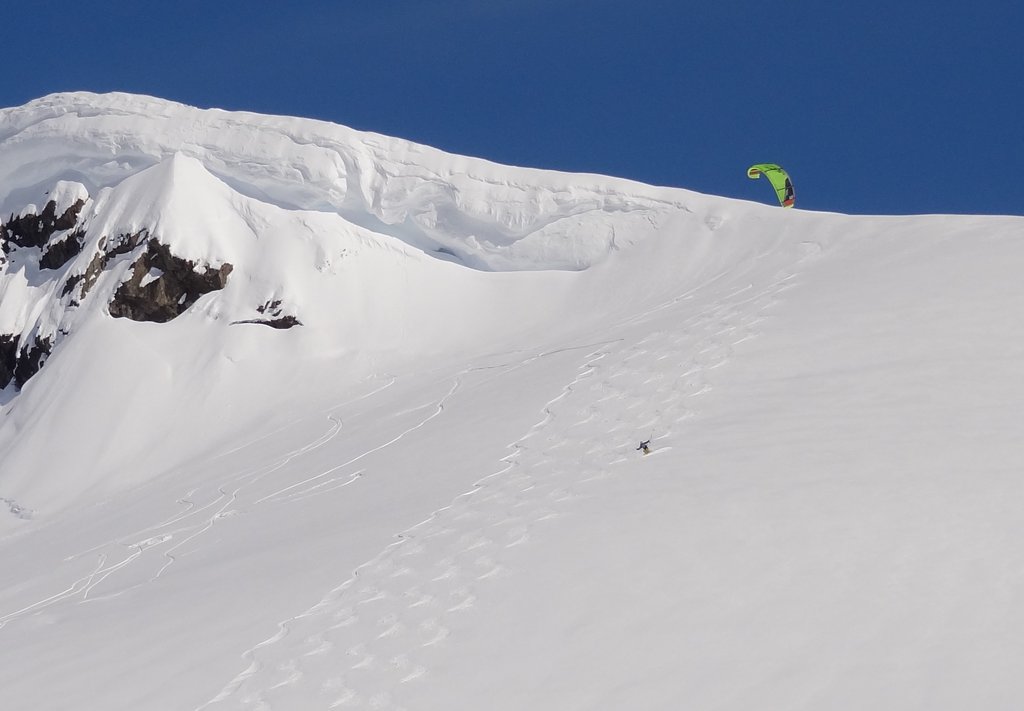 LEARNING
LEARNING
Without any buoyancy issue, learning on snow takes 2 hours rather than the typical 2 weeks on water. Best is to take a snowkite lesson from one of many schools. For experienced kiters the main difference between kiting on water vs. snow is speed and 3-Dimension sport with all the terrain and mountains. If desired, the speed on snow is twice that of water.
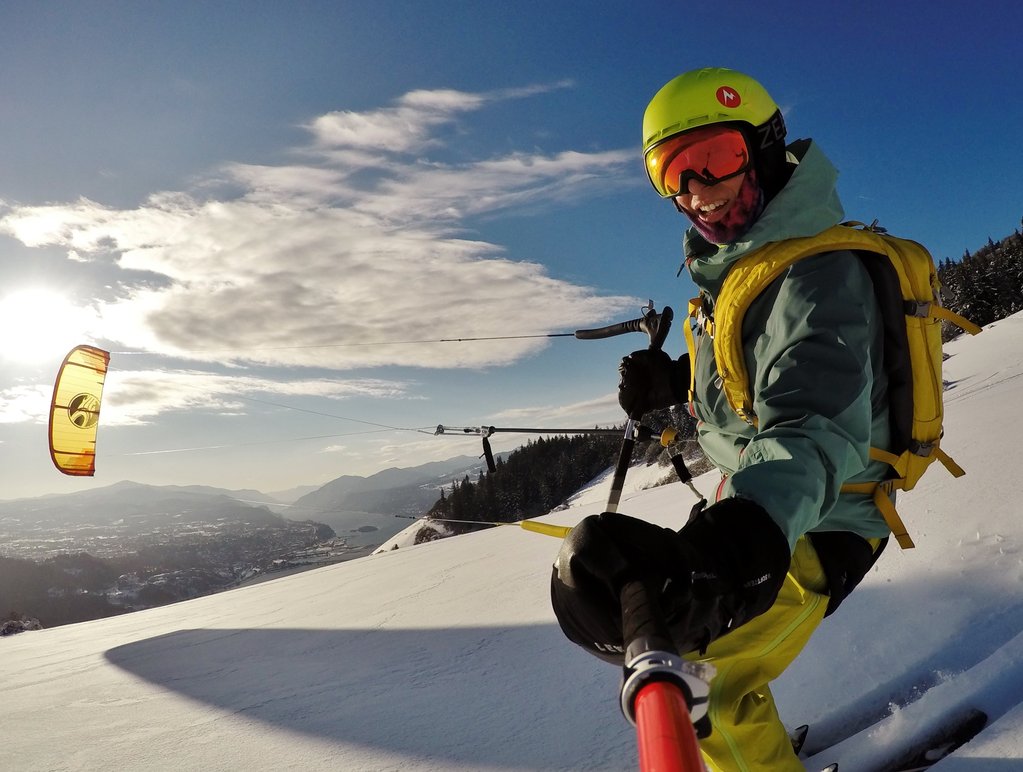
LAUNCHING/LANDING
Snowkiting and trees don’t mix. So, launching and landing is performed in the full force of the day’s wind. Initial launch with an inflatable kite on snow is usually performed by positioning the kite and pulling on one of the steering lines similar to a self launch on a sandy beach. Re-launching during your session with the leading edge down is performed by a “reverse “ launch pulling on both steering lines. Landing is either by bringing kite to edge of window, landing, and then pulling appropriate center line; or by activating the safety release.
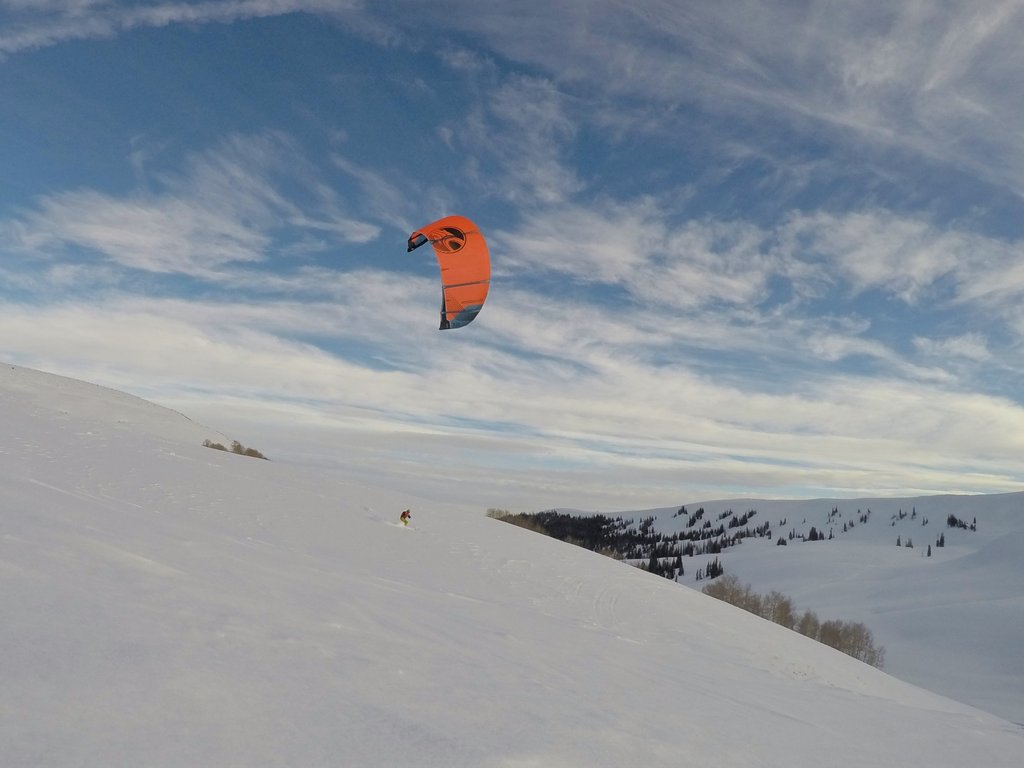
TERRAIN
Mountains, cornices, wind drifts, gullys, hills, and undulating terrain provide an endless variety of kiting experience. Slashing, riding, jumping, floating, and exploring in a variety of snow conditions is like nothing else. Not only are our skis and boards riding this variable terrain, but our kites dance on the wind eddy’s, up-drafts, etc. created by this same terrain. Like water, snowkiters search out a variety of conditions which translate as follows: Waves → Cornices; Glassy → Untracked fresh snow; Big Air → Gliding; Foiling →Powder. Looping the kite is an integral part of snowkiting and very easy to do on snow. When gliding off small peaks, approach it as you would paragliding or any other flight sport. Weather is extremely important with wind going up the hill. All of you gear must be in great condition with secure harness and attachment. Start small and gradually work your way up.
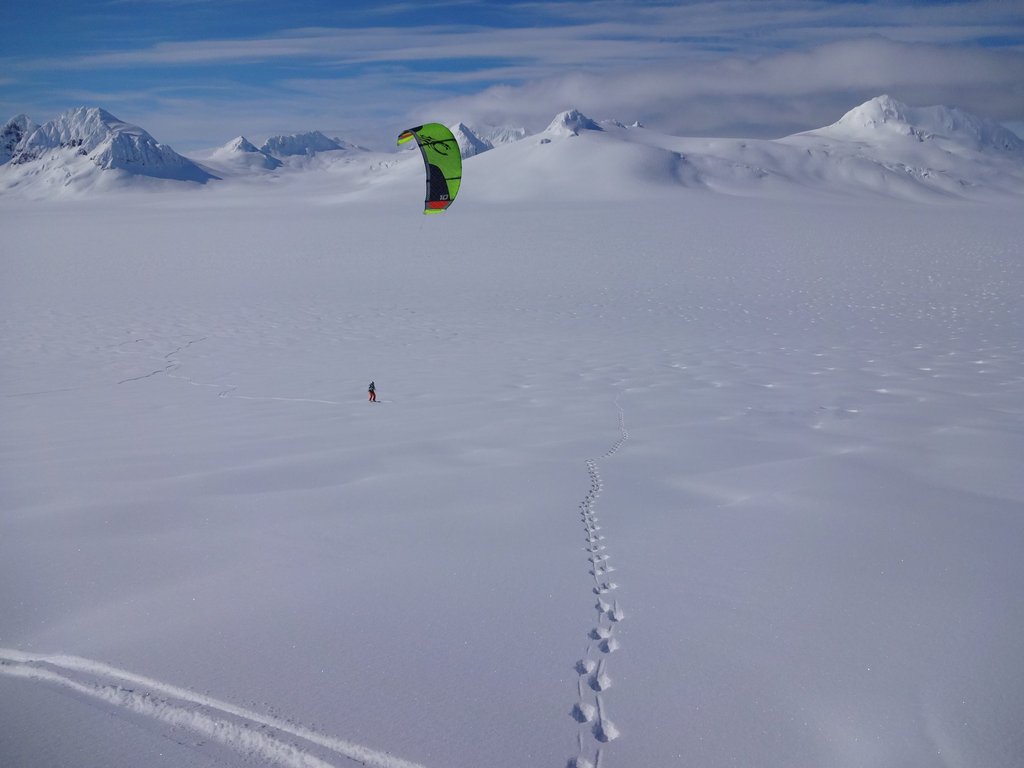
Big thanks to Ken Lucas for sharing his expertise!
Follow @kenlucas on instagram for more information and to learn more about advanced snow kiting!
This article was first published on Cabrinha’s blog here.


